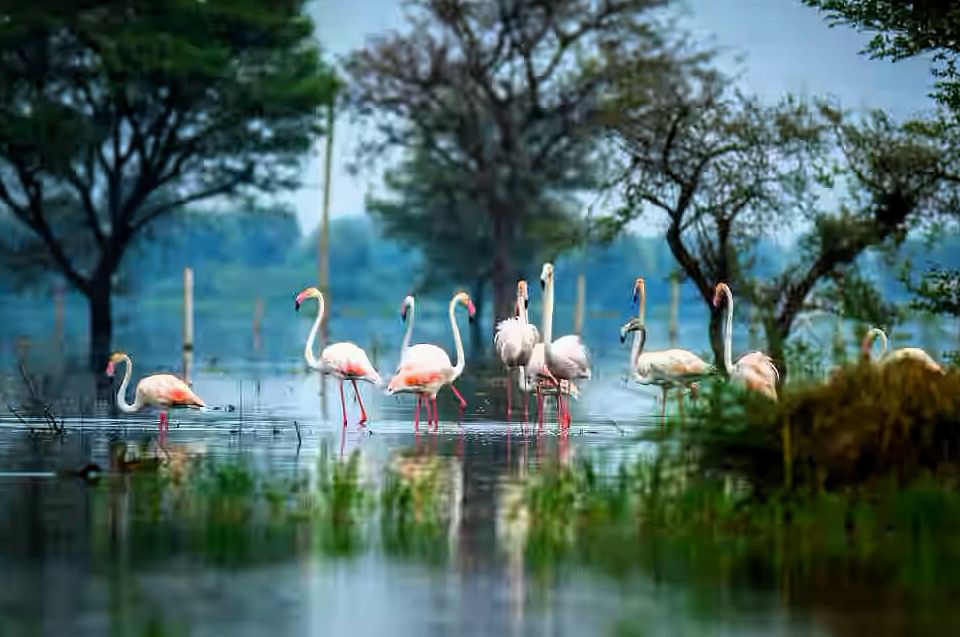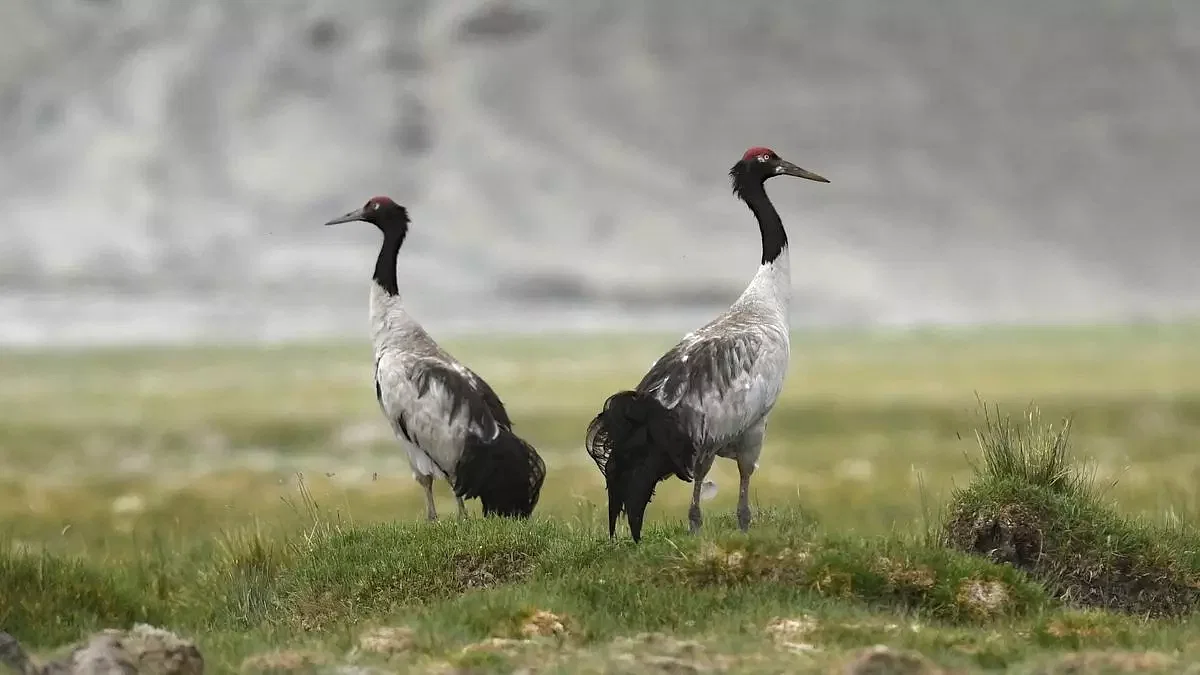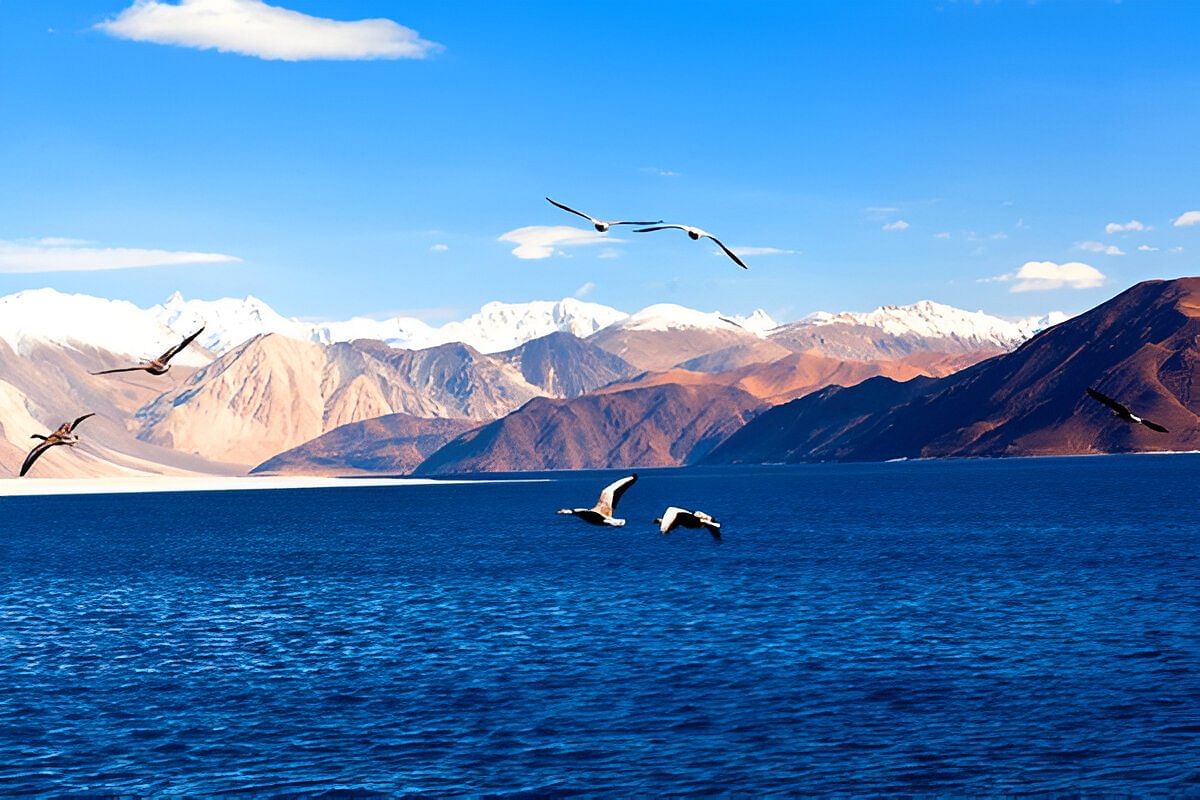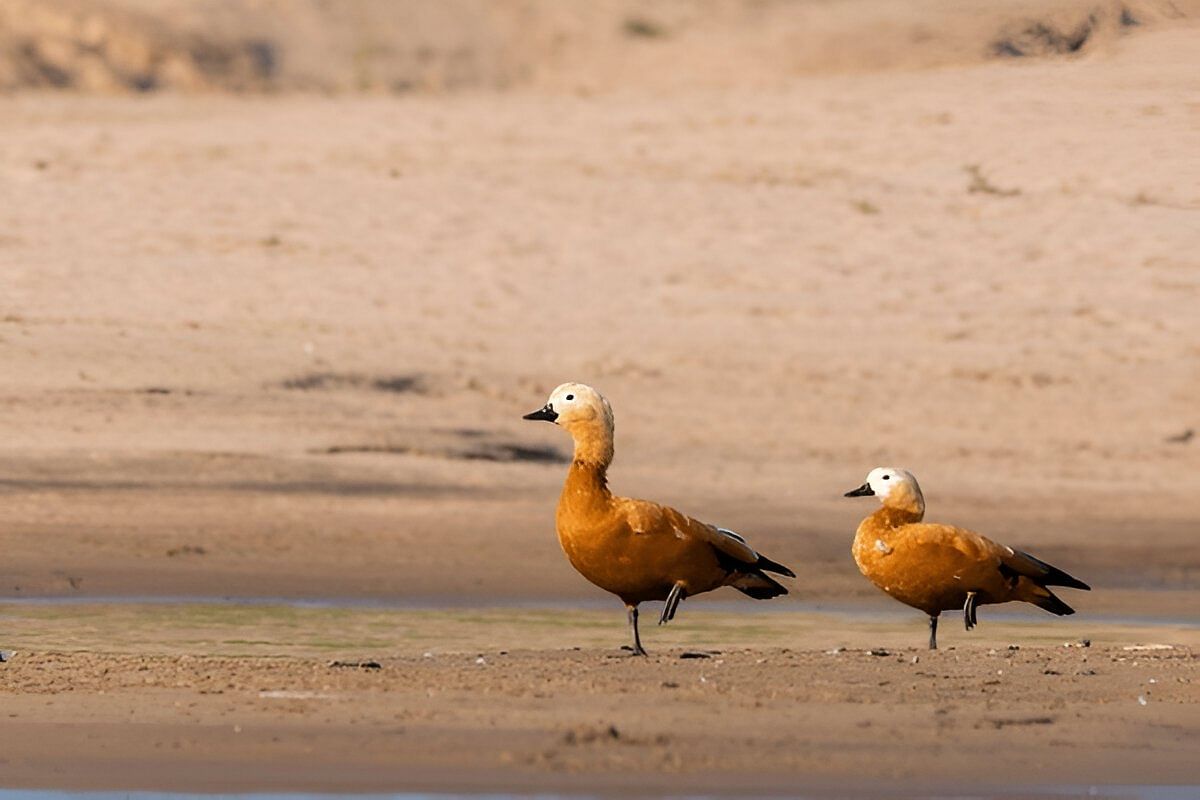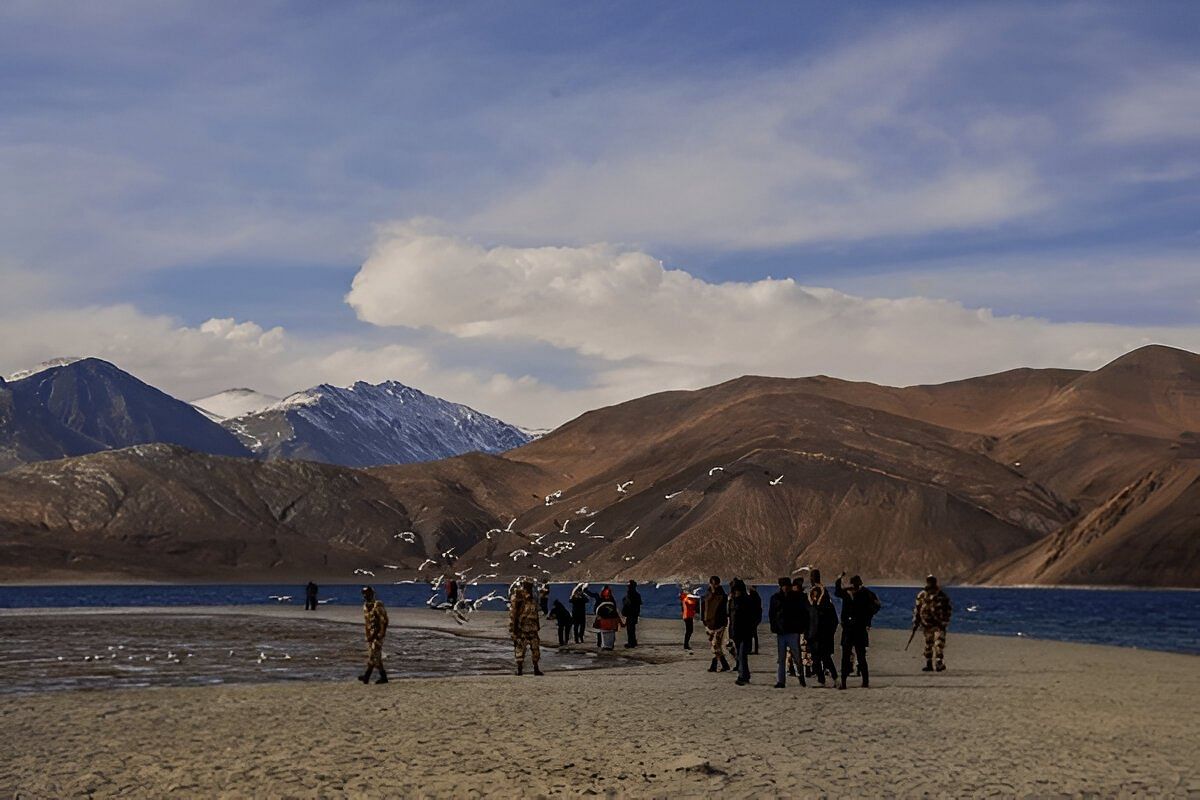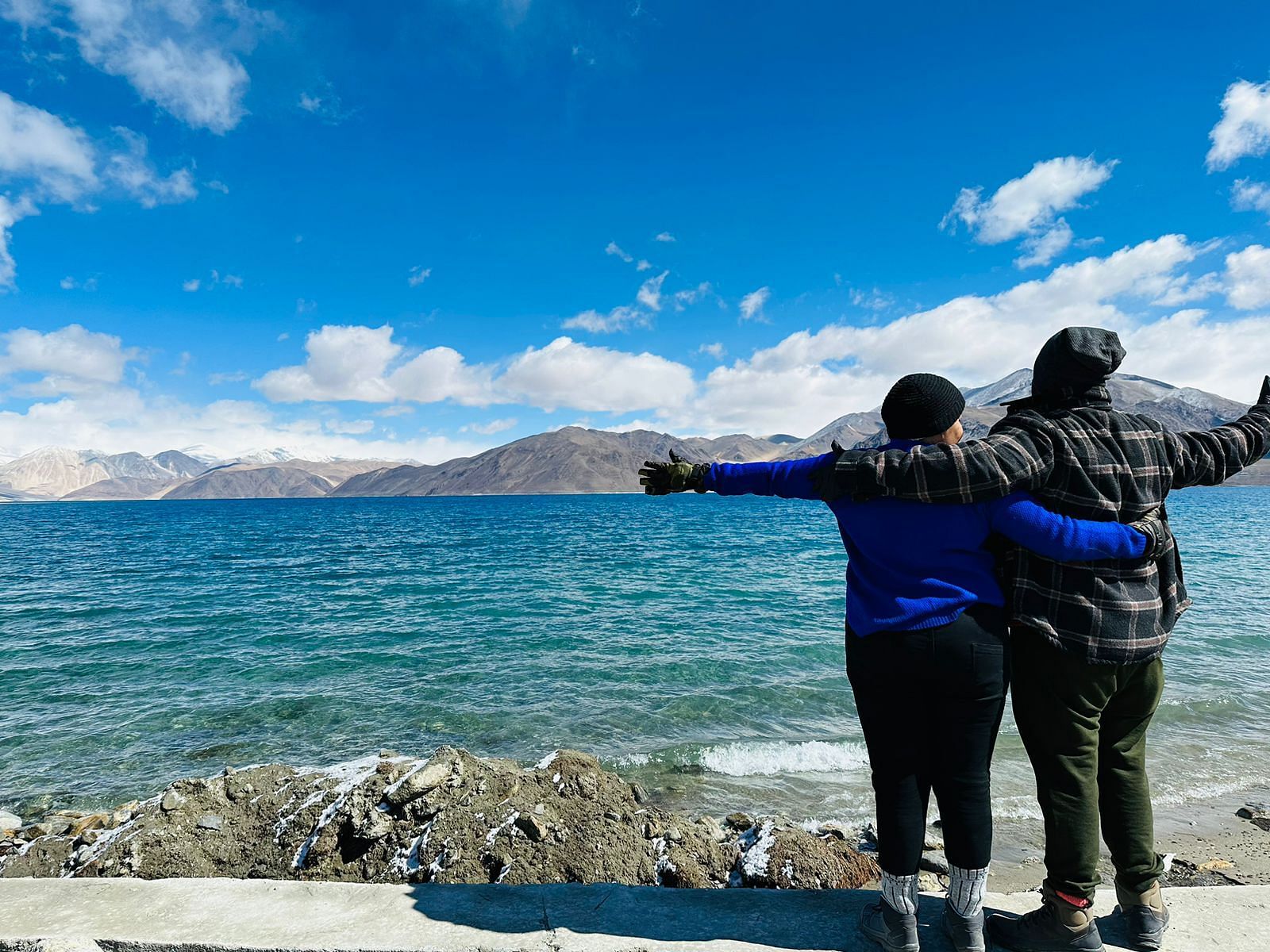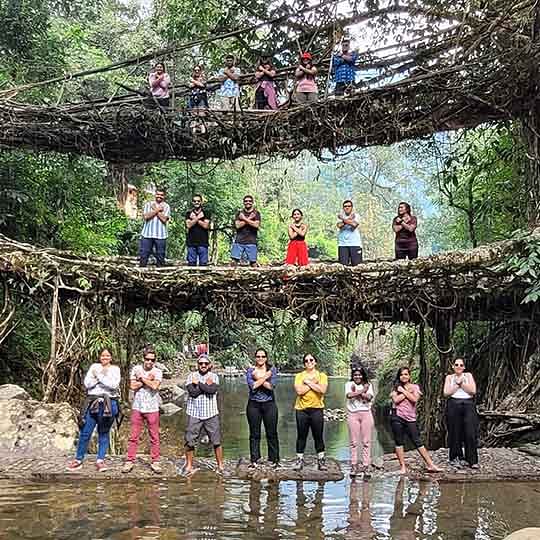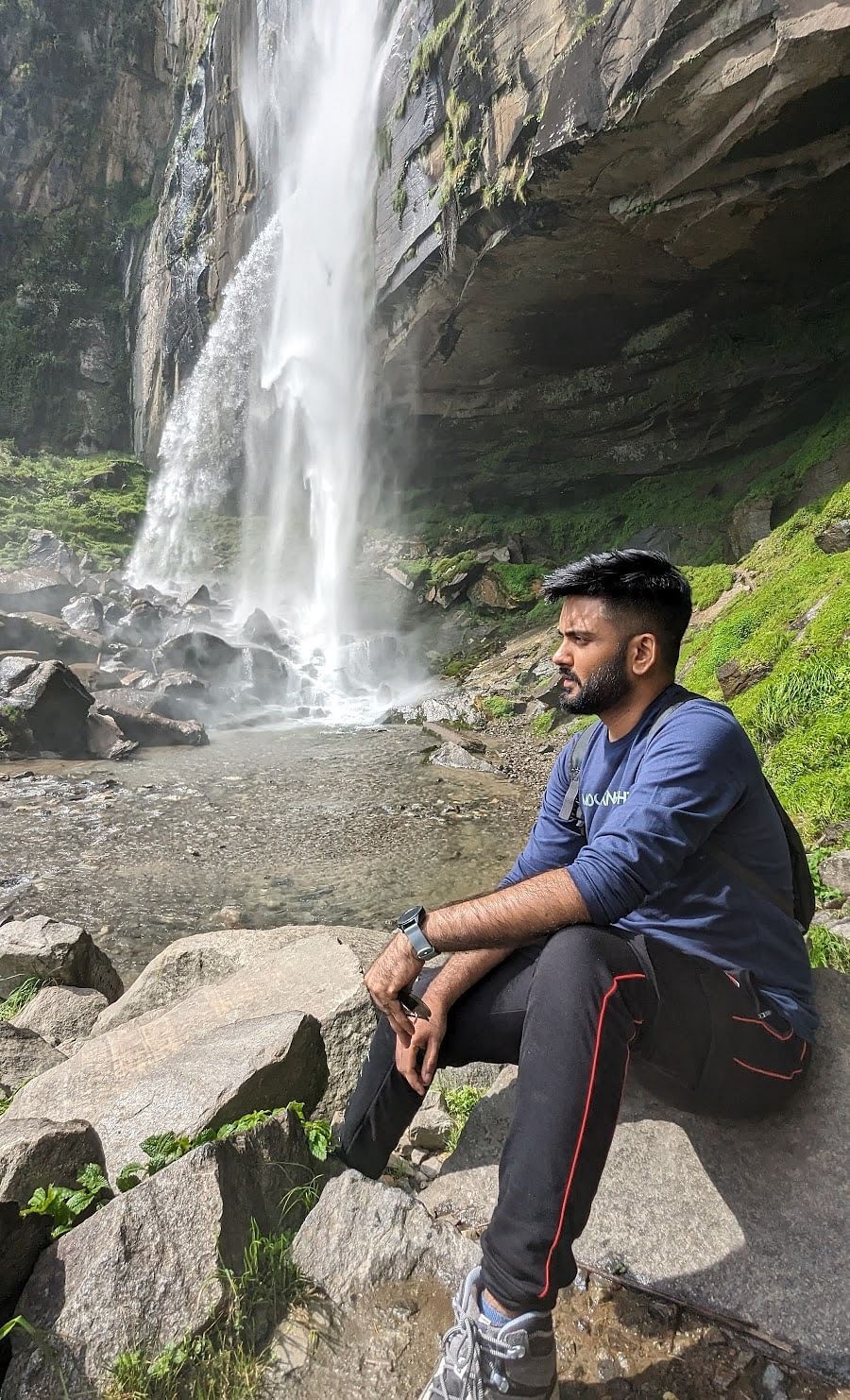You’ve probably heard that Ladakh is all about adventure—bike rides, treks, and crazy road trips. But what if you just want to slow down, breathe in the fresh mountain air, and watch some incredible birds soaring over the Himalayas? Not just your everyday pigeons, but rare, high-altitude birds—over 300 species! If that sounds like your kind of vibe, then Ladakh tours have got you covered.
From the elegant Black-Necked Crane near Tso Moriri to the soaring Himalayan Griffon in Nubra Valley, there’s plenty to spot if you know where to look. In Puga-Sumdo Valley, you might catch a glimpse of the tiny Brandt’s Mountain Finch, while Hemis National Park is a great place to find Golden Eagles, Himalayan Snowcocks, and Chukars.
If you’re planning a Leh Ladakh bike trip, why not add a little birdwatching to the adventure? Swap the engine’s roar for the sounds of nature, soak in the stunning views, and spot some rare Himalayan birds along the way. It’s an experience you won’t forget!
Famous Bird Species to Watch in Ladakh
Here are some of the most exciting feathered friends you can find in Ladakh:
- Black-necked Crane – Ladakh’s state bird, often seen near Tso Kar, Hanle Marshes, and Tso Moriri during the breeding season (May–September). It has a striking black neck, a red crown, and a graceful presence in wetland areas.
- Himalayan Snowcock – A high-altitude specialist found around Leh and Hemis National Park from June to September. Recognizable by its grey body, white neck stripes, and loud, echoing calls.
- Lammergeier (Bearded Vulture) – One of the largest raptors in the Himalayas, found year-round in Nubra Valley, Khardung La, and Hemis National Park. It has an orange-golden head, a wedge-shaped tail, and is known for dropping bones to crack them open.
- Tibetan Sandgrouse – A desert-adapted bird with buff-colored plumage and a black belly patch, commonly spotted in Hanle Plains and Changthang during summer (June–August).
- Ibisbill – A unique wader with a curved red bill, often seen walking along rocky riverbeds near the Indus River in Shey and Upshi between May and October.\
- Golden Eagle – A powerful high-altitude predator found in Sham Valley and Nubra. This dark brown bird with a golden nape is best spotted in winter.
- Bar-headed Goose – One of the world’s highest-flying migratory birds, known for crossing the Himalayas. It has a white face with black bars and is seen at Pangong Tso and Tso Moriri from May to October.
- Guldenstadt’s Redstart – A vibrant songbird with a fiery orange-red belly and black throat, often spotted in Zanskar Valley and Hemis during summer (June–August).
- Upland Buzzard – A large, pale raptor of the Tibetan Plateau, found in Hanle and Changthang during summer. It has a light brown body with a barred tail and often perches on rocks.
- Snowfinch (White-winged & Tibetan) – Hardy birds that survive extreme winters, hopping on snow at high-altitude passes like Khardung La and Tanglang La year-round.
Rare Sightings: If you’re lucky, you might spot the Saker Falcon near Hanle, Pallas’s Fish Eagle along the Indus River, or the Himalayan Griffon perched on cliffs near Leh.
Top Places for Bird Watching in Ladakh
Wondering where to watch birds in Ladakh? Well, the spots don’t just offer a great birdwatching experience—they come with stunning views, exciting activities, and a whole lot more. Here are some of the best places for birdwatching in Ladakh!
1. Tso Moriri
Tso Moriri is a beautiful high-altitude lake in Ladakh, located inside the Changthang Wildlife Sanctuary. It is a Ramsar wetland, meaning it is an important place for birds and nature. Surrounded by tall snowy mountains, the lake is peaceful and perfect for birdwatching. The calm blue waters and the sight of rare birds make it one of the best places for bird watching in Ladakh.
- Key Species: Bar-headed Goose, Black-necked Crane, Brahminy Duck (Ruddy Shelduck), Great Crested Grebe
2. Tso Kar
Tso Kar, also called the "White Lake," is a remote and quiet place in Ladakh. The lake has white salt deposits around it, making it look unique. It is one of the best places to see rare birds, especially during the breeding season.
- Key Species: Black-necked Crane, Ruddy Shelduck, Tibetan Sandgrouse, Greater Sand Plover
3. Nubra Valley
Cross Khardung La, soak in the epic views, and enter a land of sand dunes, rivers, and greenery. Nubra Valley is home to finches, shrikes, ducks, and even majestic eagles. Who knew a desert could be such a birding hotspot?
- Key Species: Himalayan Snowfinch, Eurasian Hoopoe, Chukar Partridge
4. Indus River Belt (Shey, Thiksey, Upshi)
The marshes and riverbanks of the Indus River near Shey and Thiksey are among the best places for bird watching in Ladakh. The combination of wetland habitats and green patches along the river makes this an ideal stop for birdwatchers who want to see a variety of species without venturing too far from Leh.
- Key Species: Ibisbill, White-throated Dipper, Eurasian Hoopoe
5. Hemis National Park
Spanning 4,400 square kilometers, Hemis National Park is the largest national park in India and one of the best places for bird watching in Ladakh. While it's famous for being the Snow Leopard Capital of the World, its diverse landscapes, ranging from rocky cliffs to alpine meadows, make it a fantastic birding destination.
- Key Species: Golden Eagle, Himalayan Snowcock, Lammergeier
6. Pangong Tso
Known for its ever-changing hues and stunning beauty, Pangong Tso is also a prime location for birdwatching. Birdwatching here is best paired with camping, offering a chance to spot birds at sunrise and sunset when they are most active. This is truly one of the best places for birdwatching in Ladakh!
- Key Species: Bar-headed Goose, Great Crested Grebe, Pallas’s Gull
7. Changthang Wildlife Sanctuary
Spanning the high-altitude plateau of eastern Ladakh, Changthang Wildlife Sanctuary is a vast and breathtaking landscape, home to diverse birdlife. Situated at an elevation of over 4,500 meters, this sanctuary offers a unique mix of wetlands, grasslands, and alpine desert, making it an excellent spot for birdwatching. It also shelters rare and endangered species that thrive in Ladakh’s extreme climate.
- Key Species: Black-necked Crane, Tibetan Gazelle (mammal, but notable), Upland Buzzard, Guldenstadt’s Redstart
8. Khardung La
At one of the world's highest motorable passes, birdwatching is challenging due to the altitude, but species like the Tibetan Snowcock and Chukar Partridge can be spotted amidst the rugged terrain.
- Key Species: Snow Partridge, Red-billed Chough, Tibetan Snowfinch
9. Hanle Wetlands
Located near the Hanle village, these wetlands are lesser-known birding spots where one can observe species such as the Black-necked Crane and various waterfowl, all set against the backdrop of Hanle's clear night skies, ideal for stargazing in Ladakh.
- Key Species: Black-necked Crane, Bar-headed Goose, Tibetan Sand Plover, Common Raven
Best Season for Bird Watching in Ladakh
The best season for bird watching in Ladakh is late spring to early autumn, particularly from May to September, when migratory birds arrive, and resident species are most active. Here’s a detailed breakdown:
- Spring (May – Early June): As the snow melts, Ladakh’s high-altitude lakes like Tso Moriri and Pangong Tso come alive with migrating birds. You’ll see Bar-headed Geese, Ruddy Shelducks, and Black-necked Cranes settling in for their breeding season—definitely a sight worth capturing!
- Summer (June – August): This is peak birdwatching season! The warmer weather brings out both resident and migratory birds. Head to Tso Moriri, Tso Kar, Hanle, and Shey Marshes, and you’ll spot everything from Himalayan Snowcock and Tibetan Sandgrouse to Brahminy Ducks and Pallas’s Gulls.
- Autumn (September – Early October): Birds start heading back to their winter homes, making it a fantastic time to see Golden Eagles and Himalayan Griffons soaring over the landscape. The lakes haven’t frozen yet, so you might still catch a few late migratory visitors.
- Winter (November – April): The cold gets intense, and most birds move to warmer places, but if you're up for a challenge, you can still find Snowfinches, Golden Eagles, Red-billed Choughs, and Upland Buzzards braving the harsh conditions.
How to Reach Ladakh for Bird Watching
Getting to Ladakh for birdwatching takes some planning, but the journey itself is an adventure!
1. By Air (Fastest & Easiest)
The Kushok Bakula Rimpochee Airport (Leh) connects Ladakh to Delhi, Srinagar, Jammu, Chandigarh, and Mumbai (seasonal). Flights take about 1.5 hours from Delhi, but weather can cause delays. Since Leh is at high altitude, plan a 24-48 hour rest to acclimatize before heading out.
2. By Road (Scenic & Adventurous)
- Srinagar to Leh (NH1) – 434 km, 2 days with a stop in Kargil. Open May–October. Enjoy views of Zoji La, Dras, and Lamayuru, with best places for bird watching in Ladakh like Sindh Valley (Golden Eagles, Himalayan Griffons).
- Manali to Leh (NH3) – 490 km, 2 days via Rohtang Pass, Baralacha La, and More Plains. Open June–September. Spot birds at Keylong (Himalayan Snowfinches, Chukars).
- Delhi/Chandigarh to Leh – A longer but rewarding road trip combining Srinagar or Manali routes, perfect for gradual acclimatization.
Tips for Bird Watching in Ladakh
If you're planning to enjoy birding in Ladakh, a little preparation can make all the difference! Here’s what you need to know to make your birdwatching experience both rewarding and responsible.
- Take It Slow – Acclimatization is Key
Ladakh sits at a high altitude (3,500m–5,000m), so give your body time to adjust before heading to birding spots like Tso Moriri or Pangong Tso. Spend at least two days in Leh, drink plenty of water, and avoid alcohol to prevent altitude sickness.
Birds are most active in the early morning (5:30–9 AM), so set your alarms! Late afternoons (4–7 PM) are also good, especially for spotting raptors and waterbirds. Midday? Not the best—birds take a break, and so should you.
- Gear Up for the Adventure
A good pair of binoculars (8x42 or 10x42) is a must for spotting distant birds, and if you're into photography, a telephoto lens (400mm+) will help capture those stunning shots.
Wear layered clothing, as Ladakh’s mornings are chilly but afternoons can get warm. Sturdy shoes are essential for rocky trails, and don’t forget a hat, sunglasses, and a power bank—electricity can be scarce in remote areas.
- Respect the Birds & Their Habitat
Give the birds space—especially Black-necked Cranes, as they’re highly sensitive to disturbance. Avoid playing bird calls to attract them, as this is banned in many areas. Stick to designated trails to protect fragile ecosystems.
- A Local Guide Can Be a Game-Changer
Hiring a guide can help you find hidden bird watching spots in Ladakh, like the top spots to see Ibisbill near the Indus River. They also assist with permits (some areas like Hanle and Tso Moriri require special permission) and share fascinating local folklore about birds. Expect to pay around ₹2,000–3,500 per day for a private guide.
Indians need to pay environmental fees for Ladakh. Foreigners require a Protected Area Permit (PAP) for special areas like Hanle and Chumar, which can be obtained through a tour agency in Leh. If you plan to photograph endangered species like the Snow Leopard, check the Wildlife Protection Act for necessary permissions.
Conclusion
Ladakh isn’t just about stunning landscapes and thrilling adventures—it’s also a paradise for bird lovers! Whether you’re spotting the majestic Black-necked Crane at Tso Moriri, watching raptors soar over Hemis National Park, or catching a glimpse of rare high-altitude species in Changthang Wildlife Sanctuary, every birdwatching spot in Ladakh offers something unique. So, grab your binoculars, pack some warm clothes, and get ready for an unforgettable birdwatching experience in one of the most breathtaking regions on Earth!




